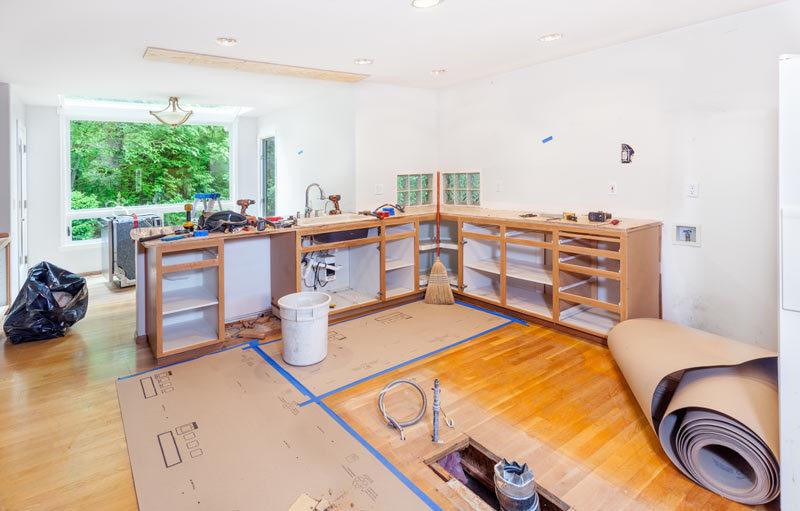Renovating your house is like playing a thousand-piece jigsaw puzzle, but significantly more expensive. You need to consider various factors, plan for them, and budget accordingly. This goes all the way from having a house plan to ensure the changes you want to see are clear and defined to finding the best contractors and negotiating a deal.
Moreover, you must think about where you might be staying while these changes occur if your remodeling makes it difficult to stay in your own home. This can be extremely difficult to manage, but with the help of this guide, you’ll know the key points you need to focus on. While the specifics of your plan can vary, these points will set a solid foundation for you to get the work started in a smooth and economically viable manner.
Hiring the right contractors
The lifeblood of any home renovation project is the professionals you hire to help get the job done. It is their job to bring your vision to life and rectify the changes you want in a manner that is both practical and in accordance with state laws. If you hire the right contractor, they might even offer up some possibilities you hadn’t considered yourself.
When hiring, look up reviews of the contracting company to determine whether they’re timely, reliable, and detail-oriented. In turn, it might be a good idea to offer certain perks to working for you, as you’re likely to secure the loyalty and motivation of the contracting team. This could be as simple as offering amenities like hiring out your own local porta potty rental or providing lemonade during their work shifts.
You should also ask a lot of questions during the selection process. It might seem bothersome to ask too many, but a contractor who can deal with you patiently is more likely to help get the job done the way you want instead of those trying to get the job done as quickly and easily as possible. A combination of the aforementioned approach shows the contractor that you’re a serious client with demands, but one that can be kind and worth working for.
Work out a budget
Nothing changes unless you spend money on it, but the goal is to spend the least amount of money possible and get the most changes you can. While working out the budget details, a few factors must be kept in mind.
First of all, buy it nice, or buy it twice. This can apply to building materials such as lumbar and mortar or installations like wiring. If you try to save a penny now, you might end up paying a pound later. Second of all, consider how these purchases might affect your real estate value. For example, splurging on the patio might seem a bit reckless, but if it can help increase the curbside appeal of your home, it could bountifully impact your prospects if and when you decide to sell the house. In this case, the renovation can be considered an investment on which you can expect to make a sizable return.
Finally, you should keep a contingency fund in case of emergencies, such as wasted material, unexpected repairs to damages, or even Nature’s wrath. Once you’re in the midst of the project, you don’t want to slow down the progress because of sudden financial demand.
Hopefully, you won’t have to worry about spending any money from that contingency fund, but as the saying goes, it’s better to have it and not need it than it is to need it and not have it.
Create two wish lists
Considering the time, energy, and money that is about to be poured into a house remodeling project, you want to ensure you get to make all the changes you want. To ensure you don’t forget anything important, you should create a wish list. As we’ll explain in a second, you’ll likely be making two lists anyway.
The first list is about all the changes you want. Ask yourself what the renovation aims to achieve. Do you want to make the house more accommodating for your family? That might mean changing one room into a playpen for the kids or dividing the bedrooms to allow your teenage children some much-needed privacy. Are you hoping to do some hobbies at home? Perhaps you want to convert one of the rooms into an art studio or a home gym. Jot down all the things you want and share this with your contractor. This is where the second list comes in.
The contractor will tell you which of these changes is possible, given the bylaws of your state, where you might need to apply for a permit, or which ones cannot be done without damaging the foundation of your household. The contractor will also provide an estimated budget for each proposed change. This budget will allow you to shortlist in an informed manner, so you can finalize a practical project that aligns with your vision.
Plan Out the Timeline
Major home remodeling is a long-term project and can be affected by upcoming events; you can use it to your benefit if you plan it accordingly. For example, if the project will take a month and makes your house difficult to stay in, you could have your yearly two-week vacation during this time. With the right contractors, you won’t need to check in constantly. As you’re likely to be staying in a hotel anyway, it might as well be in a scenic location.
Alternatively, you need to be aware of public holidays coming up, as this might mean your renovation gets put on hold. The best way to go about setting up a timeline is setting a fixed end date by which you need all changes to be made, working backward, going over the days you can’t expect work to occur, and settling on a reasonable start date. If you want to be extra cautious, add a week to the start date so you can accommodate for any emergencies or unexpected delays that might occur during the process.
Conclusion
There are a lot of factors that people gloss over when considering home remodeling, but after reading this guide, you should hopefully have a better idea of the key details to focus on and finalize before you even begin your project. By having the basics set in stone and your backup plans in place, you will be able to move forward confidently. Moreover, hiring the right contractor and building a rapport with them can go a long way in making this process easier for you.



















